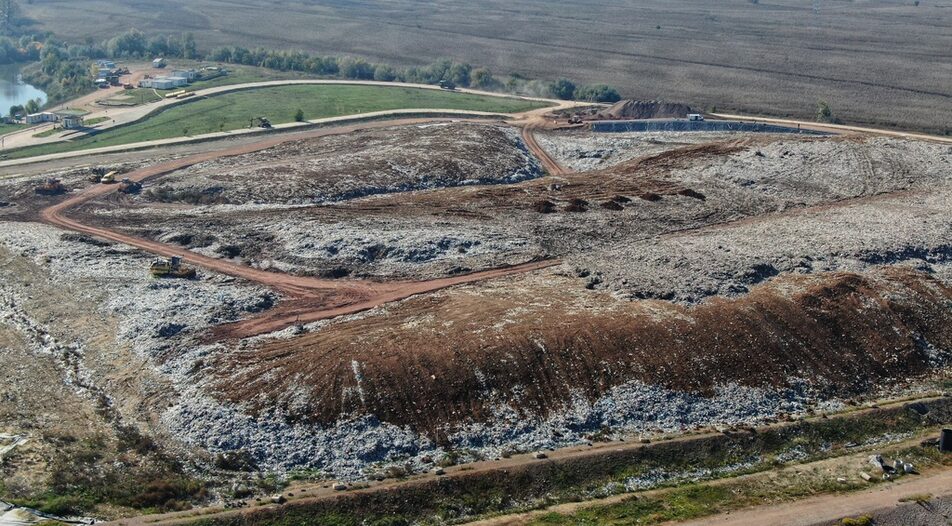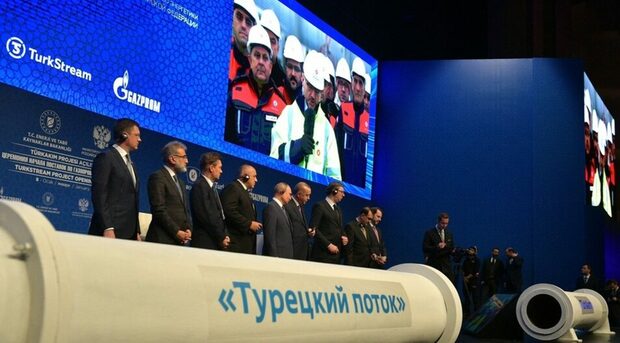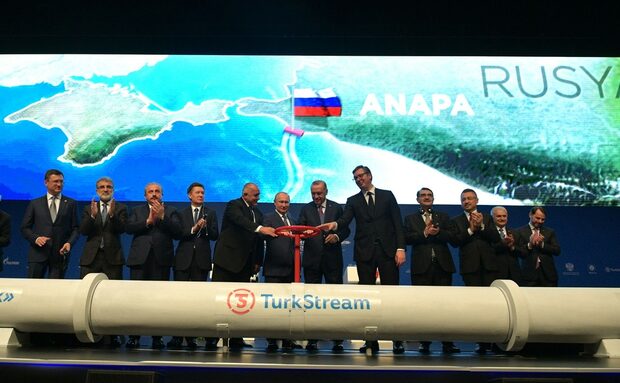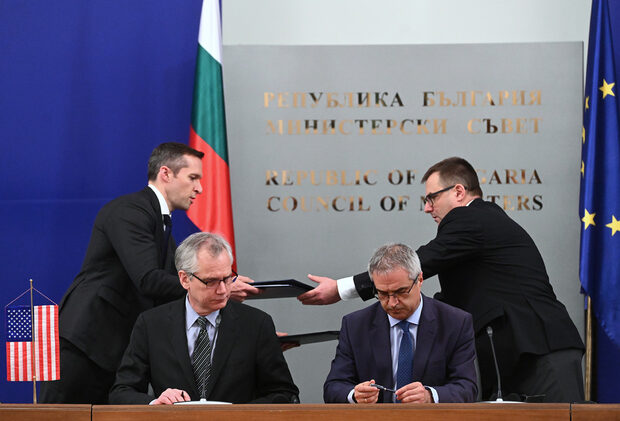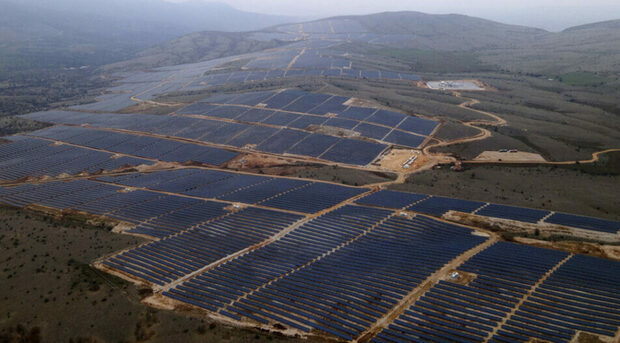What does it take to build a mega-incinerator in the heart of the country? First, you disguise the project as a stone-wool factory. Then, you convince the local governments in the area to look the other way and ignore the actual purpose of the project. Finally, ignore the public backlash that the project causes and try to rush through receiving permission from environmental experts and the local authorities.
This is how, in short, the project of businessman Rumen Gaitanski, known better by his nickname "the Wolf," developed. His intention to build a huge RDF (refuse-derived fuel) waste-burning plant near the town of Pavlikeni in the Veliko Tarnovo region, emerged at the beginning of the year. The plant will have a capacity of more than twice the planned incinerator of Sofia, i.e. 420,000 tons of waste per year, or 60 truckloads of garbage per day. Theoretically, it could burn all the RDF waste produced in Bulgaria, and more.
Residents of the region have greeted the project with widespread dissatisfaction. The environmental impact report published last month received negative feedback from activists and locals alike, but was approved at an expert environmental council on 31 January.
The only stumbling block in its way appears to be Environment Minister Borislav Sandov, who has indicated he will bring the project back for review. Notably, Mr Sandov is the first minister in recent memory to have come from the ranks of environmentalists, which makes the realization of Mr Gaitanski's plans a little more uncertain.
What is the project and why does it matter?
The waste incinerator project has been pushed through the Petrurgia mining company, which is under the control of Mr Gaitanski for several years now. It has held a 35-year concession right over the basalt mine near the village of Varbovka since 2013. The project went unnoticed by the public for some time, being disguised as a stone-wool plant and the RDF plant was described simply as an energy source for the needs of the factory.
In fact, the incinerator is the key part of the project. The plan is that it will have two furnaces, each capable of processing 28 tonnes of waste per hour, or 580 tonnes per day maximum, the environmental impact report states. A total of 56 tonnes per hour will be fed into the plant to generate around 44 mW of gross power output. Compare this to the 22.5 tonnes of RDF per hour and 180 thousand tonnes per year that would be processed by the planned incinerator project in the capital - it is simply massive.
Judging from the size of the planned installation, it is very likely that Mr Gaitanski's plan is to collect the RDF waste from all over Bulgaria to fuel the plant.
Environmentalists and locals oppose the project
A number of potential environmental issues surround the project. Slag, cinder and boiler dust will be generated as a consequence of burning RDF, alongside fumes and a potential impact on local water supply.
Various stakeholders have lodged their strong opposition to the project, expressing concern about the future of the environmentally clean and agricultural region. An environmental committee for preserving the municipality of Pavlikeni as an ecologically clean area published a position criticizing the environmental impact report for its lack of clarity. They claimed that there was no information about the flue gas treatment technology or about the plans to treat the toxic and highly corrosive water, which will be a by-product of the incineration process.
Another issue comes with the disposal and recovery of the waste from the operation. According to the log of RDF plants in Italy and Germany, the non-combustible residue produced at the exit of steam furnaces (toxic ash and slag) is estimated at "between 15 and 20 percent of the fuel input, i.e. 160 to over 200 tonnes per day." The environmental impact report on the Pavlikeni project, however, has only a single sentence mentioning this issue: "'The waste generated will be treated in accordance with current legislation and best available practices by companies holding the appropriate permits under the Waste Management Act." The local activist group responded by saying that they "find such a frivolous treatment of such an important issue both offensive and misleading". There is also not a word mentioning the toxic water treatment in the report at all.
Local authorities got the Wolf's back
Unsurprisingly, Rumen Gaitanski's project passed the expert ecological council with the votes of seven representatives of the Regional Inspectorate of Environmental Protection - Veliko Tarnovo, and with the support of the deputy mayor of Pavlikeni Anastasia Vacheva and the mayor of the village of Varbovka Ivelin Rozinov.
The votes against were from the NGO sector - Danita Zarichinova from "For the Earth" environmental NGO and Pencho Pandakov from the Fishing Club Balkanka, renowned for its environmentalist work in recent years.
The result of the vote is not a surprise, as sources told Capital weekly that the representatives of the NGO sector, which could send two to the council, had very little time to react.
But the environment minister is actually an environmentalist for once
After this development, all eyes turned to the Minister of Environment and Water Borislav Sandov, who is the last barrier standing in the way of the project. At the beginning of the year Mr Sandov said he would make a decision when the case reached his office. "When we talk about implementing certain investment intentions that concern the environment, the public's opinion is very important," he said. "At this stage, I am waiting for the Regional Inspectorate of Environment and Water to carry out its mechanism, after which, if it comes to me, I will also express an opinion based on the entire procedure and all the opinions submitted," he added.
Mr Sandov has already made a move to appoint a new head of the local Environmental Inspectorate. Tsonka Hristova, who managed the institution until now, has been nominated for office by MRF - the Turkish ethnic party, which has been acting like a business corporation at the local and national level for years. Her substitute Maya Radeva, an ecologist with over 25 years of experience in the private and public sector alike, has no traceable political linkages and will be the one deciding the fate of the project from now on.
Who is the Wolf?
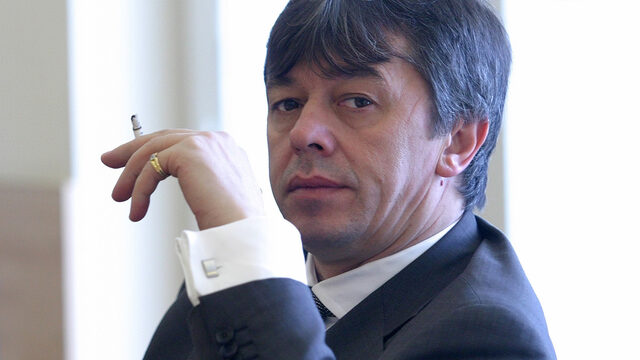
Mr Gaitanski has established himself as the waste baron of Bulgaria for decades now, starting off in the murky 1990s in Sofia. "Removing the Wolf" from the capital's waste management sector was the centerpiece of then-Mayor Boyko Borissov, but during his premiership in the 2010s Mr Gaitanski only grew his business, even beyond the waste sector.
Companies linked to him won the concession rights over Gorna Oryahovitsa airport, an opportunity to build a hotel in the state hunting farm near the Iskar reservoir, received a huge loan from the Bulgarian Development Bank (BDB), and re-established his presence in Sofia by winning a 150 million BGN five-year contract for waste disposal from the capital's municipality in 2020. In the past decade, he had practically monopolized garbage collection in municipalities around the country - Kardzhali, Sliven, Stara Zagora, Pomorie...
If he completes the RDF burning plant near Pavlikeni, this would give him control over the entire waste cycle in the country. The potential monopolization of the sector is a problem on its own, but it might additionally hinder two other potential RDF-treatment initiatives - one by Sofia Municipality, and one by the government, which proposed exchanging some of the Maritza East - 2 power plant coal processing plants to be refurbished as RDF burning installations instead. The effect might be that private interests may yet again trump over public needs.
What does it take to build a mega-incinerator in the heart of the country? First, you disguise the project as a stone-wool factory. Then, you convince the local governments in the area to look the other way and ignore the actual purpose of the project. Finally, ignore the public backlash that the project causes and try to rush through receiving permission from environmental experts and the local authorities.
This is how, in short, the project of businessman Rumen Gaitanski, known better by his nickname "the Wolf," developed. His intention to build a huge RDF (refuse-derived fuel) waste-burning plant near the town of Pavlikeni in the Veliko Tarnovo region, emerged at the beginning of the year. The plant will have a capacity of more than twice the planned incinerator of Sofia, i.e. 420,000 tons of waste per year, or 60 truckloads of garbage per day. Theoretically, it could burn all the RDF waste produced in Bulgaria, and more.








